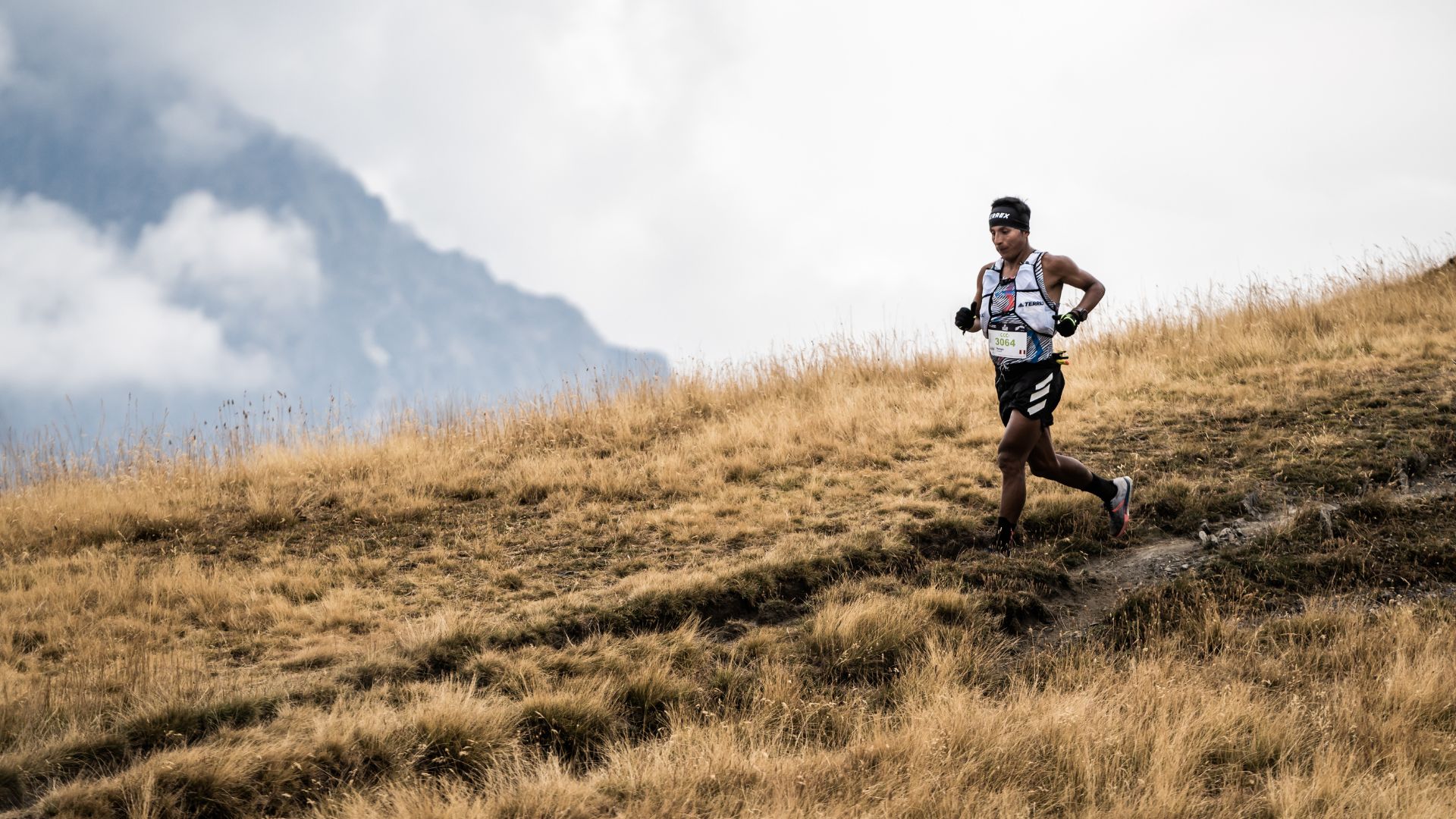Trail Running Technique: Use These Tips From Pro Runners To Run Better Off-Road
Improve your downhill trail running technique with this advice from the best in the business

While your running technique is a personal thing that you shouldn’t necessarily mess with too much unless you’re suffering regular injuries, there are ways to improve your running form that can help you move better both on and off the road.
It’s particularly important to consider your trail-running technique when running downhill, because this is an area most runners could improve significantly. Perfecting your downhill trail running technique will make you faster and safer when running off-road.
To help you do just that we spoke to four Adidas Terrex athletes at the Ultra Trail du Mont Blanc mountain running festival in Chamonix—Tom Evans, Petter Engdahl, Emily Hawgood and Sabrina Stanley. Here are five tips from the pros that can help you refine your trail running technique.
1. Shorten Your Stride
“You probably need to shorten your stride a little bit,” says Evans. “You can get away with overstriding on the road to a certain extent, but out here in Chamonix, you can’t. If you overstride, there’s so much movement in your ankle. That’s when people roll their ankles.
“Typically it’s people who don’t run on the trails that much who roll their ankles way more than people who spend more time on the trails. It’s not just because trail runners have got stronger ankles. They probably do just through running on trails more, but it’s having a shorter stride, especially on the downhill.”
2. Look Up And Lean In
“If I’m running downhill, on a super-technical downhill, I’m probably looking four or five steps ahead of me, and then remembering what is there,” says Evans. “You can’t necessarily prepare for that. It’s just by doing it that you end up improving.”
“The more you can just lean into it and really understand that gravity helps you a lot, the better,” says Hawgood. “Get that mindset of thinking a few steps in advance. You’re taking this step now, but also knowing that you’re not going to be there for very long. Maybe it moves underfoot, maybe it doesn’t, but you’re only there to bounce off onto the next step.”
Get the Coach Newsletter
Sign up for workout ideas, training advice, reviews of the latest gear and more.
3. Keep Your Upper Body Stable
“I try to have a very stable upper body on downhills,” says Engdahl. “That’s where strength training and core and upper body training come in. If you’re not stable in your upper body, you will have your arms and your upper body going all over the place. Stay relaxed and try to keep your hips high.”
4. You Can Use Poles Downhill Too
“Most people use poles on the uphill,” says Stanley. “A lot of people miss a trick because they don’t use them on the downhill. On steep descents, if you can use your poles to take some pressure off your quads, it will help your longevity. This goes for long-distance events like 100-milers, because you need so much more longevity and it will help you feel that much stronger at the end.”
5. Get Strong
“Getting the strength that you need is probably the most important thing,” says Evans. “A lot of that can come specifically from the trails because when I’m out in the mountains, I don’t do much strength training because you’re just wrecking your legs on a daily basis anyway.”
If you want to do strength training specifically for the trails, Evans suggests breaking it down into uphill- and downhill-specific work.
“Downhill is all about your quads,” says Evans. “It’s about time under tension and knee stability. Do eccentric work, like a rear foot elevated lunge, for example. You can start by doing it isometrically—just holding it—so you’re getting maximum time under tension.
“For uphill, it’s all strength and power development, mostly from your posterior chain: your glutes, your hamstrings and your calves. Do regular squats, regular deadlifts and regular calf raises. I go pretty heavy—five sets of five reps would be pretty typical.”

Nick Harris-Fry is a journalist who has been covering health and fitness since 2015. Nick is an avid runner, covering 70-110km a week, which gives him ample opportunity to test a wide range of running shoes and running gear. He is also the chief tester for fitness trackers and running watches, treadmills and exercise bikes, and workout headphones.
